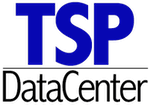Contents
- What is the TSP?
- Enrollment and Contributions
- Eligibility
- TSP Funds
- TSP Fees
- Current and Historical TSP Data
- TSP Account Login
What is the Thrift Savings Plan (TSP)?
The Thrift Savings Plan (TSP) is a retirement savings and investment plan for federal employees and members of the military. It is a defined contribution plan, similar to 401(k) style retirement savings plans in the private sector.
Because it is a defined contribution plan, this means that the retirement income you receive from your TSP account is dependent upon how much you (and your agency or service, if you’re eligible to receive your agency match) put into your TSP account during your working years and the earnings accumulated over that time.
Enrollment and Contributions
New federal employees are automatically enrolled in the TSP at a rate of 5% of basic pay to ensure they receive the full agency match. Your contributions are deducted from your paycheck each pay period. You can also stop, start or change contributions at any time.
Roth vs. Traditional Contributions
Traditional (pre-tax) contributions are deposited into the traditional balance of
your TSP account and are not taxed when you contribute them. You pay federal income taxes on these contributions and their earnings when you withdraw them.
Roth (after-tax) contributions are deposited into the Roth balance of your TSP account and are taxed when you contribute them. You pay no federal income taxes on these contributions when you withdraw them.
Roth earnings are tax-free when withdrawn as long as the following two conditions have been met:
- 5 years have passed since January 1 of the calendar year in which you made your first Roth contribution, and
- you have reached age 59 1⁄2, have a permanent disability, or have died.
Eligibility
Most employees of the federal government are eligible to participate in the TSP. You are eligible if you’re any of the following:
- A federal employee under the Federal Employees Retirement System (FERS) (generally if you were hired on or after January 1, 1984)
- A federal employee under the Civil Service Retirement System (CSRS) (generally if you were hired before January 1, 1984 and did not convert to FERS)
- A member of the uniformed services (active duty or Ready Reserve)
- A civilian in certain other categories of government service
In addition to being covered by an eligible retirement system, you must also be:
- actively employed by the federal government as a civilian employee or as a member of the uniformed services,
- in a pay status in order to contribute, and
- working full or part-time.
What Are the Core TSP Funds?
The Thrift Savings Plan offers five individual funds in which to invest:
G Fund
The G Fund is the Government Securities Investment Fund. The TSP states that the fund’s objective is to “ensure preservation of capital and generate returns above those of short-term U.S. Treasury securities.”
F Fund
The F Fund is the Fixed Income Index Investment Fund. It invests in bonds which track the performance of the Bloomberg U.S. Aggregate Bond Index. This index s a broad-based fixed-income index representing intermediate term U.S. investment grade bonds.
C Fund
The C Fund tracks the performance of the S&P 500 index. This is a stock market index tracking the performance of 500 of the largest companies in the United States and is generally considered a standard for measuring overall stock market performance.
S Fund
The S Fund is the Small cap stock Index investment fund. It tracks the performance of the Dow Jones U.S. Completion Total Stock Market Index. This index is made up of small and medium sized companies.
I Fund
The I Fund is the International Stock Index Investment Fund. It tracks the MSCI EAFE (Europe, Australasia, Far East) Index. The I Fund is the international investment option for the TSP as the companies in this index are primarily foreign (non-U.S.) companies. The MSCI EAFE Index is designed to represent the performance of large and mid-cap securities across 21 developed markets, including countries in Europe, Australasia and the Far East, excluding the U.S. and Canada.
What are the TSP L Funds?
The Thrift Savings Plan also offers 10 Lifecycle (L) Funds in which to invest. These funds are a mix of the five core TSP funds (G, F, C, S, and I). They are designed to let you invest your entire portfolio in a single L Fund and get the best expected return for the amount of expected risk that is appropriate for you.
The target allocation of the L Funds changes automatically over time based on your projected retirement age, gradually shifting from more aggressive to more conservative as you approach your projected retirement date. The name of each fund indicates one’s projected retirement date. Once an L Fund reaches its target date, it is automatically rolled into the L Income Fund. For example, in 2055, the L 2055 Fund will be rolled into the L Income Fund.
Fees
The TSP charges fees to cover its operational expenses. They are among some of the lowest in the industry.
TSP fees are paid by making small reductions to the TSP funds’ earnings. All TSP participants in a given fund pay the same percentage of their investment in the fund. This percentage is called an expense ratio. An expense ratio is the result of dividing a fund’s expenses by the average dollar amount held in the fund.
Current and Historical TSP Data
See current and historical daily share prices, monthly fund returns and annual fund returns here at TSPDataCenter.com.
Accessing Your TSP Account
Your TSP login is where you access your TSP account online to do things like check your account balance, view transaction history, download statements or make withdrawals. Login to your TSP account at the TSP.gov website.

